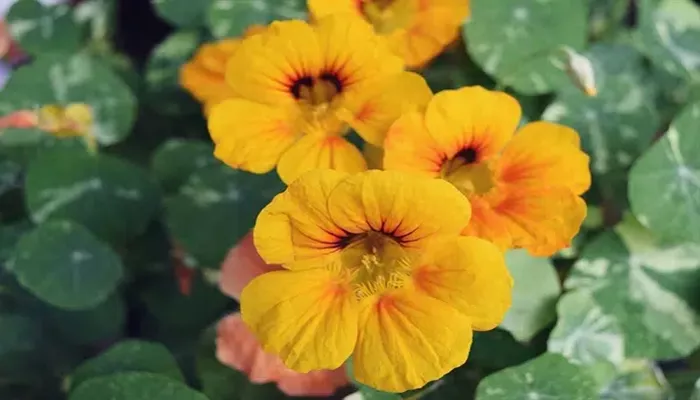Edible Flowers Gain Popularity Among Gardeners.
Arlington, Va. – Edible flowers are making a comeback as part of a growing movement to make the most out of limited gardening space.
Nancy Dowling, a Northern Virginia Master Gardener, is among those embracing this trend. Working in her small Arlington garden, Dowling combines beauty with practicality, cultivating flowers that are not only visually appealing but also edible.
Her garden, which attracts birds and butterflies, is also a source of culinary delight. “Working outside makes you hungry,” Dowling joked, explaining that when a vibrant nasturtium blooms nearby, she enjoys snacking on its petals.
More people are interested in maximizing the productivity of their gardens, Dowling noted, saying, “What’s more productive than eating your own plants?”
Arden Jones, owner of Great Day Gardens in Bedford County, agrees. “A lot of flowers are edible, and it’s more common than you think,” she said. Jones, who already grew cut flowers, herbs, and greens for sale, found it natural to expand into the edible flower market. Her cornflower, nasturtium, calendula, and rose petals have become a unique feature in her salad mixes, which she sells at the local farmers market. She also provides edible flowers for bakery items and custom wedding cake decorations.
Historically, many edible flowers have been valued for their medicinal properties. Mary Toth, curator of herbaceous plants at Norfolk Botanical Garden, explained that rose petals and rose hips were promoted during World War II as a vital source of vitamin C when other foods were scarce. “It depends on the flower, but many have beneficial medicinal value,” Toth said.
However, not all flowers are safe to eat, and some can be poisonous. “You have to be careful,” Dowling warned, noting that flowers like peonies, hydrangeas, and hellebores can be deadly if ingested.
Even within the same plant, some parts may be edible while others are not, and some edible parts may taste too bitter. Toth recommended focusing on the petals, suggesting that gardeners remove the stamen, pistil, and calyx before consumption.
Before foraging flowers, it’s essential to ensure they are correctly identified and free from pesticides. Toth also advised against eating flowers if there’s any doubt about their safety.
For optimal freshness, Toth recommends picking flowers early in the morning and avoiding any that are faded, dusty, or discolored. Properly stored in the fridge, edible flowers can last up to three days and should be rinsed in a bowl of water just before eating.


